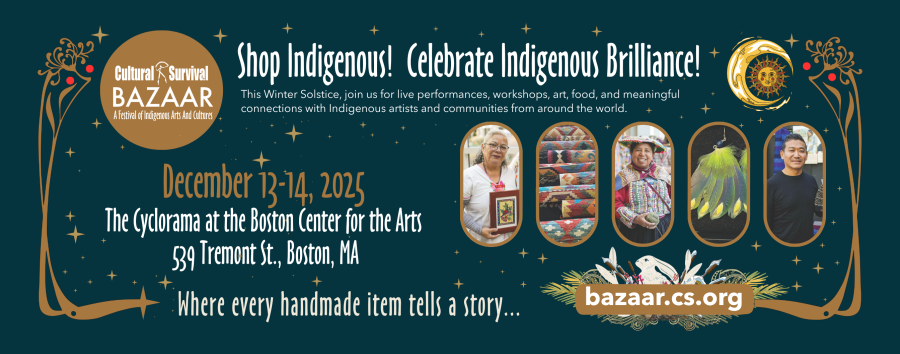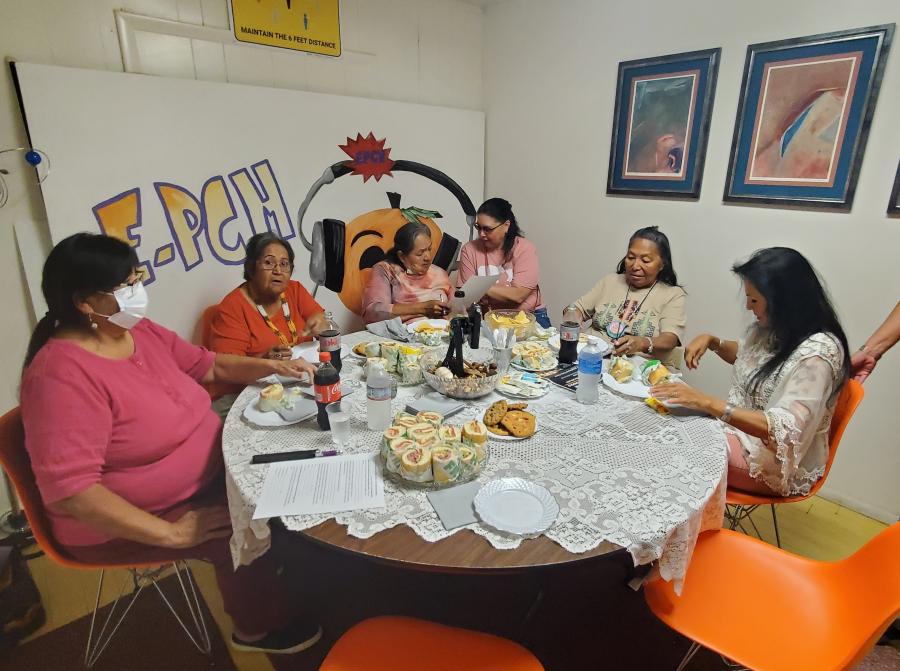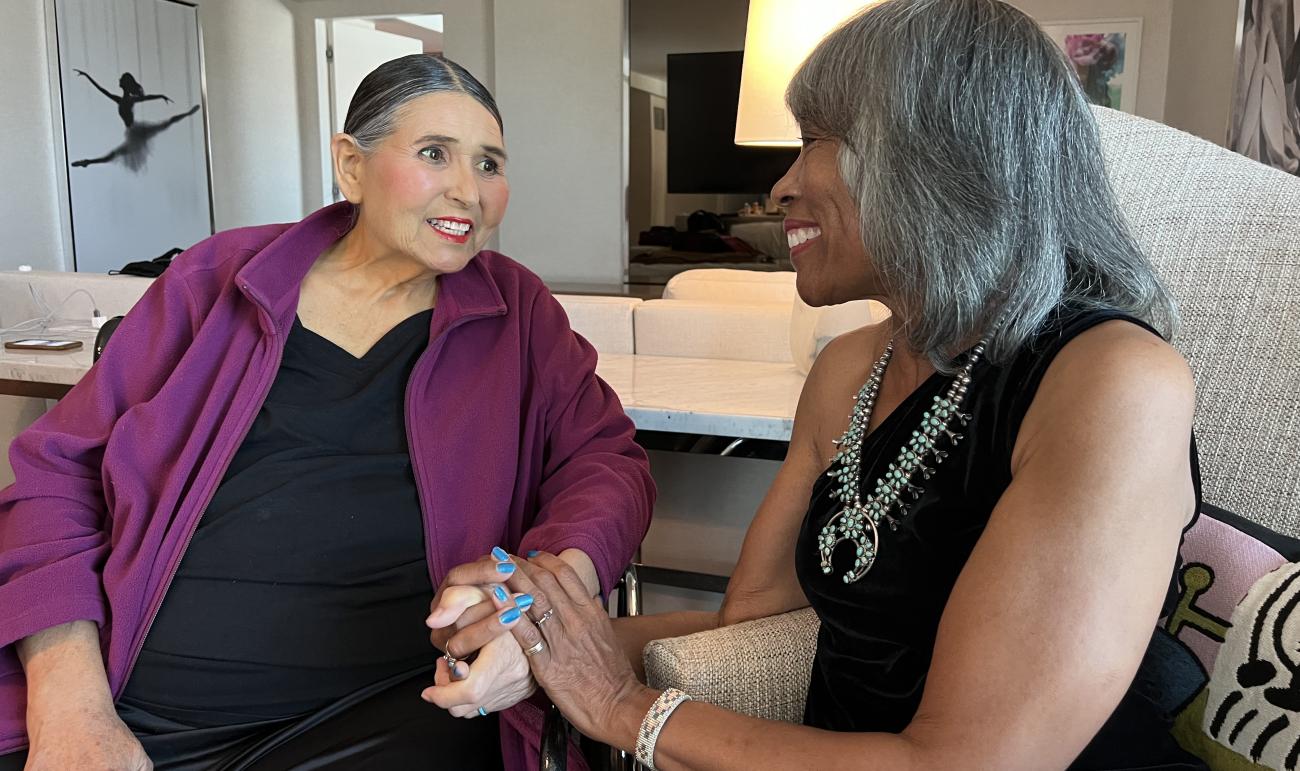
By Phoebe Farris (Powhatan-Pamunkey)
How we remember someone is both a reflection of the person remembered and our own personal connection to them. Often our memories are in conflict with public perceptions or based on our own biases. But, they are real to the person remembering a friend, a loved one, a relative, a colleague, or a mentor. They are private remembrances. And for a public figure like Sacheen Littlefeather (1946-2022), they are even more complex.
By now, many people in the United States and abroad know who Sacheen Littlefeather was. Both the mainstream and Native media have published articles and produced films and podcasts about her. Most recently she was honored on September 17, 2022 at “An Evening with Sacheen Littlefeather,” a celebration of live Native American performances featuring a long-awaited statement of apology from the Academy of Motion Picture Arts and Sciences.
Sacheen may be most known for her 1973 Oscars speech, in which she famously declined Marlon Brando’s award for best actor in “The Godfather”on his behalf. For this, she received death threats and was ostracized from Hollywood. Sacheen’s childhood experiences, such as her parents’ struggles and eventual divorce and her identity issues as a biracial child with a White Mountain Apache and Yaqui father and an European American mother, became public knowledge. We know about the years she spent living with her grandmother in a predominantly white neighborhood where she endured racial slurs and discrimination.
Sacheen’s activism regarding the 1969 Native American occupation of Alcatraz Island and how her Oscar speech inspired and uplifted American Indian Movement activists in the 1970s who occupied Wounded Knee, South Dakota, is also well documented. But what was Sacheen like in her private world? How did she interact with friends and acquaintances who were not famous actors and celebrity activists, but rather “ordinary” people she encountered when the press was not around? How many non-famous people were close to her in her private world away from the spotlight?
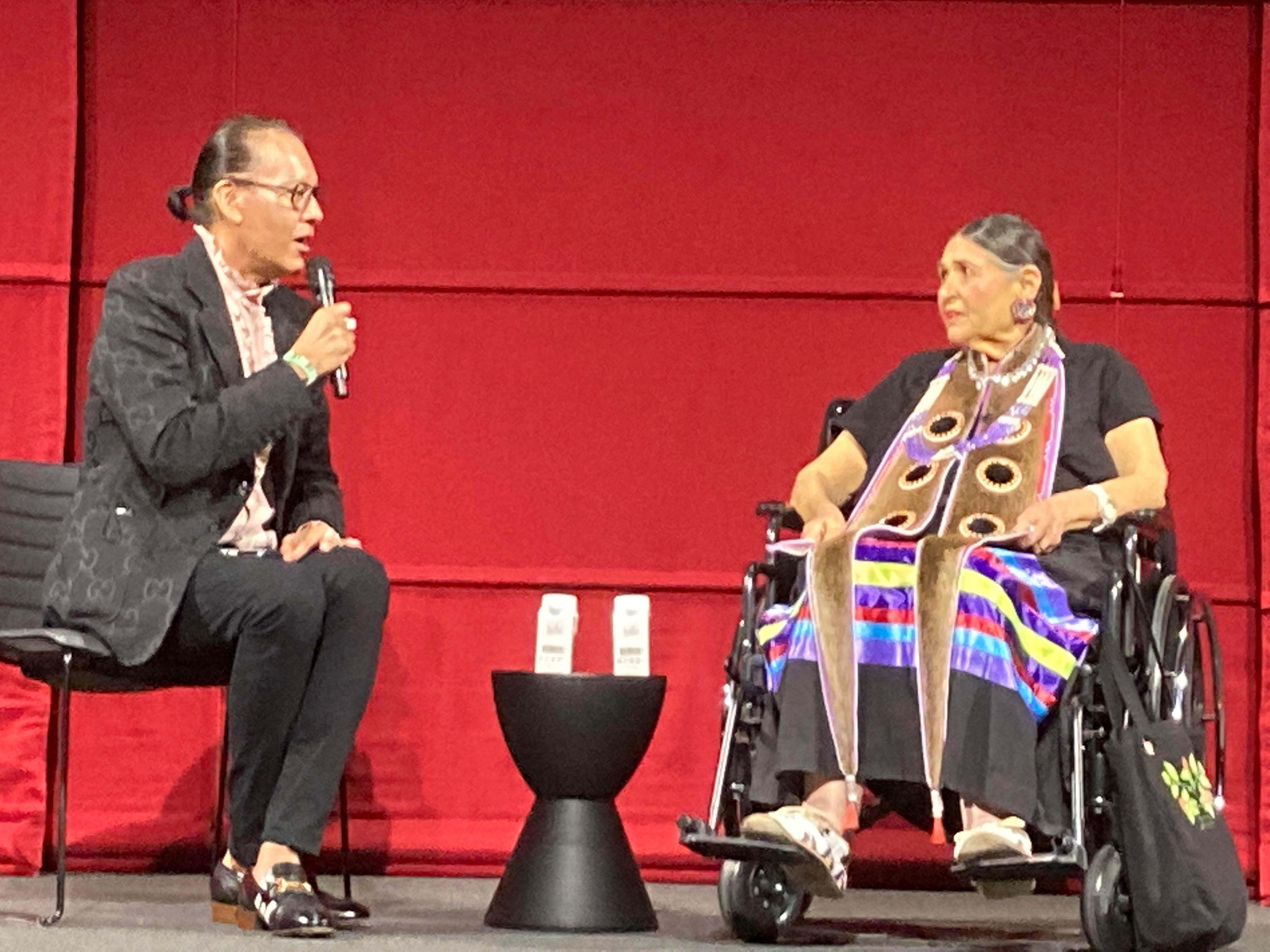
Bird Runningwater (Cheyenne and Mescalero Apache), President and Executive Producer of CloudWoman Media, interviewing Sacheen Little Feather on September 17.
I met Sacheen around 1990 and maintained a friendship with her over the years, mainly interacting with her and her husband Charles Koshiway (Otoe/Sac and Fox) at their homes in California, at various conferences, and once at a powwow where they were Head Men and Women dancers. Being aware of her health issues over the years, I accepted her invitation to visit her “one last time” as she phrased it, based on her doctor’s predictions. About a month later she called about a possible celebration by the Academy of Motion Pictures, still being negotiated, and we decided that would be the best time to get together. The plan was to conduct before-and-after event interviews. As her condition deteriorated in the months leading up to September, spoken interviews became difficult for her, so we considered an email Q&A format. But, her declining health and hospice made that impossible, and the rest is history.
Instead, I would like to share excerpts from a few casual phone calls between us, my pre-ceremony questions, my somewhat biased personal opinions on how Sacheen may have answered them, and clarifications about some of the questions. I do this with a heavy heart and an inner struggle to balance my personal feelings with my journalist’s requirements for objectivity, trying not to overly interject my individual experiences, and knowing that I am just one of her many friends across Indian Country.
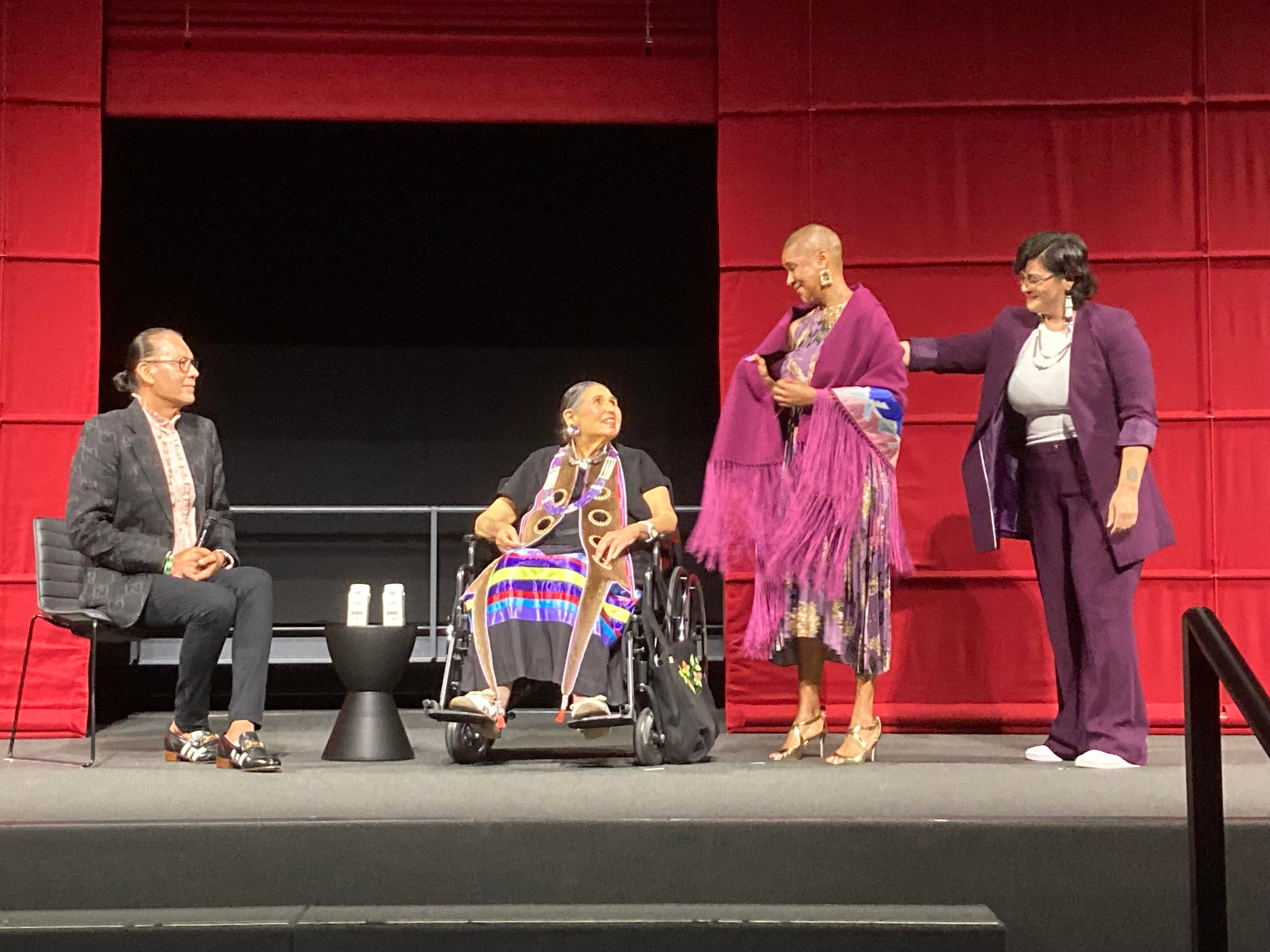
Sacheen Littlefeather gifting a shawl to Jacqueline Stewart, President and Director of the Academy Museum.
Pre-Ceremony Email Interview Questions I wrote:
- We go back many years, to around 1990 when I met you at a Native American Wellness and Healing conference where you were a speaker. So many people are fixated on your Academy Award speech for Marlon Brando and seem to forget that you had a life pre-Marlon Brando and post-Brando. Can you please share with our readers some of your early childhood and adolescent experiences that impacted your adult life as an actress, journalist, activist, and wellness practitioner (massage therapist), just to name a few of your many accomplishments?
- How did you become involved in acting in American films and Italian Spaghetti [Western] films? What types of roles did you have? Is there any one film that you were in that affected you the most from a personal and/or professional perspective?
- I wonder how many of our readers know that you were a journalist and active in the early years of the Native American Journalist Association. Please enlighten us on those experiences that mainly took place in the [San Francisco] Bay Area. And related to that, describe your participation in the Oakland and San Francisco urban cultural centers, founded to assist Indians who left their reservations and were relocated to urban cities.
- I know you are a close friend of Hulleah Tsinhnahjinnie (Seminole/Muscogee/Navajo), who is the Director of the C.N. Gorman Museum at UC Davis; the late Dr. Melinda Micco (Seminole/Choctaw/Creek), Mills College Professor of Ethnic Studies; and other Native American academics. What universities or community colleges did you attend, and during what years? Approximately what percentage of the students and faculty that you encountered were of Native American heritage? Have you been invited to speak at educational institutions post the Academy Award/Brando speech?
- Going back to your wellness/healing job experiences, how did you become interested in holistic health (massage, herbs, meditation, etc.)? Was getting involved in the wellness movement related to the stress you experienced after the Oscar speech?
- Related to this, one of your closest friends, a Nanticoke Indian from Delaware, died as a result of AIDS during the early years of the epidemic. If it is not too personal or painful, can you please share some of your experiences with your friend prior to his hospitalization and how you dealt with his diagnosis and ultimate passing? Another close friend of yours from Puerto Rico passed around the same time period. You seem to have friends from many Tribal backgrounds and races/ethnicities and have worked with them, loved them, and supported them during their crises. Speaking frankly, some Natives are prejudiced against people of different races or Tribal backgrounds. What life experiences shaped your more accepting, progressive responses to people from a wide variety of backgrounds?
- Sacheen, another important aspect of your life not known to many is your advocacy for the eventual sainthood of Kateri Tekakwitha (Mohawk), the first Native American saint. You spent many years going to the national Kateri advocacy conferences and retreats. Please share a little about your faith and the importance of Kateri Tekakwitha. Also, please share your thoughts and feelings about the late monastery monk, Father Ken, whom we met at the upstate New York Kateri conference. Father Ken was one of those unique, otherworldly people that quietly made a difference in the lives of people from all walks of life, including many Native Americans. Please share some of your mutual sainthood advocacy with Father Ken that ultimately led to Kateri Tekakwitha’s sainthood canonization.
- This may be another personal, painful topic, but I want our readers to know and understand the “real” Sacheen Littlefeather, outside of the Hollywood persona. Would you mind sharing your love story of “Mr. Charles,” as we sometimes fondly called him? How did Charles support you during all your crises with health issues, death threats after your Oscar speech, and employment problems after Hollywood blacklisted you?
- A few years ago you were working on writing a memoir, but many factors led to its postponement. What are you going to do with the chapters you finished? Your Introduction and first chapter was riveting. Will you share a few riveting sentences or paragraphs with our readers?
- Lastly, the big day is nine days away! How excited are you? What are your feelings about the better-late-than-never apology? How are you preparing mentally and physically?
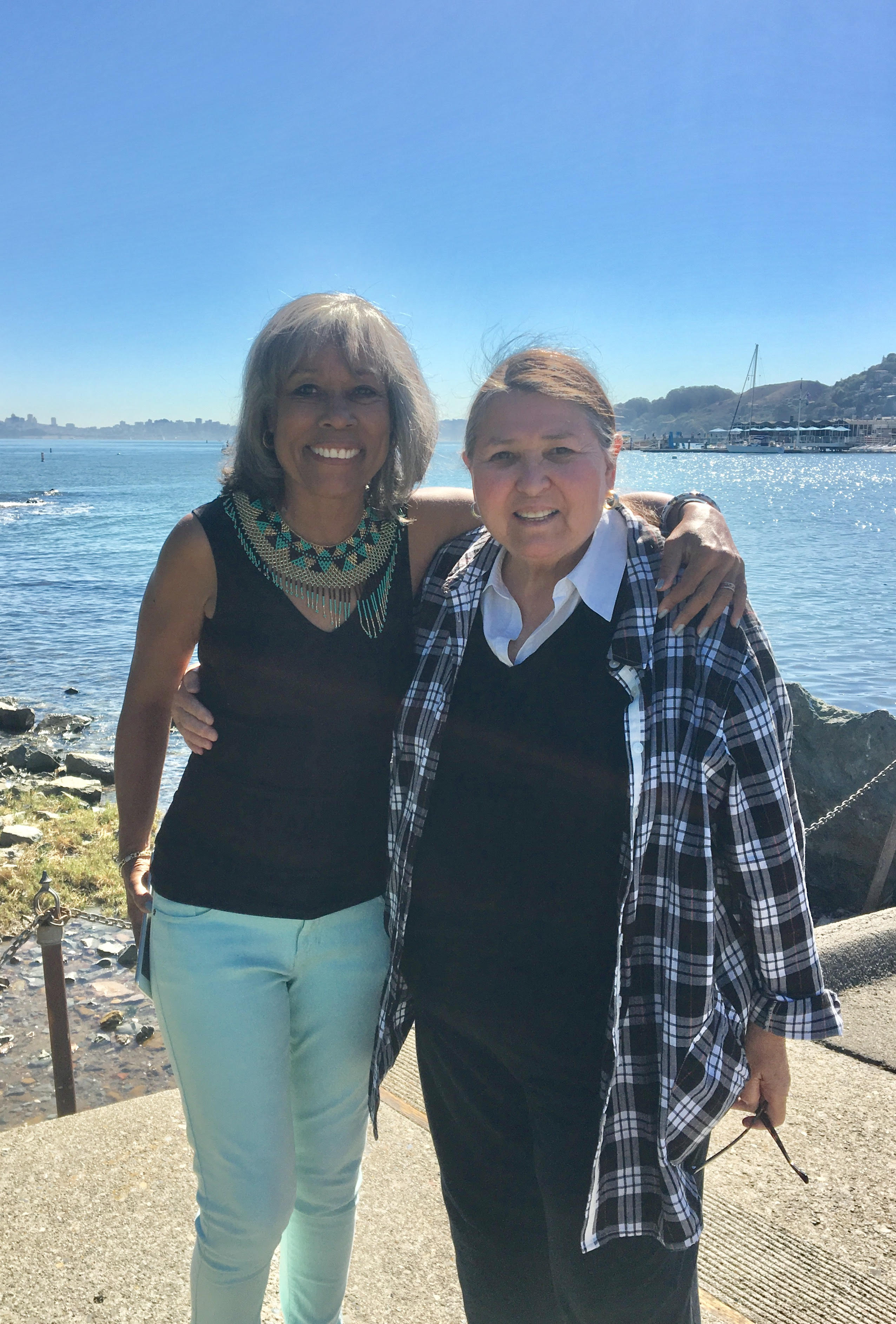
Phoebe Farris and Sacheen Littlefeather in Sausalito, CA in 2018.
When referencing painful childhood and adolescent experiences of anyone, including Sacheen Littlefeather, I prefer to publish in a first-person voice. Although Sacheen has publicly spoken about her upbringing, because she was under doctor’s orders to save her voice for September 17 and unable to respond verbally to lengthy interview questions, I prefer not to go into much detail about her childhood. Some of the responses that I have incorporated into these adjusted pre-ceremony questions/comments are from my interview with Sacheen in the Spring 2011 issue of Cultural Survival Quarterly, “Hollywood, Oscars, and Reel Injuns.”
In response to questions about her acting career, this is how she responded in 2011: “Some of my films included ‘The Trial of Billy Jack’ in the ‘70s, where I played an Indian attorney and Tom Laughlin was the main actor. I was in ‘Freebie and the Bean’ as a person in a restaurant with a few lines. That movie starred Walter Matthau. And I played in dubbed Italian Westerns because my appearance could also resemble an Italian woman. One of the American Westerns where I had a speaking part was ‘Johnny Firecloud' and 'Winterhawk.’
Regarding my question about Sacheen’s activism, I only know about her involvement with the Native American Journalists Association and the San Francisco and Oakland urban Indian centers vaguely from brief conversations, having never interacted with her in those settings.
Sacheen valued the importance of education and reached out to Native academics for advice to gain a better understanding of Native American history, and also to collaborate with them, such as in her involvement with Professor Micco during the production of the film “Reel Injuns” and her choice of photographer/filmmaker/museum director Hulleah Tsinhnahjinnie as one of the official photographers for “An Evening with Sacheen Littlefeather.” Some of the schools Sacheen attended to prepare for her varied career paths were the American Conservatory Theater, Hartnell Junior College, California State College at Hayward (now California State University East Bay), and Antioch University, where she earned a degree in holistic health and nutrition.
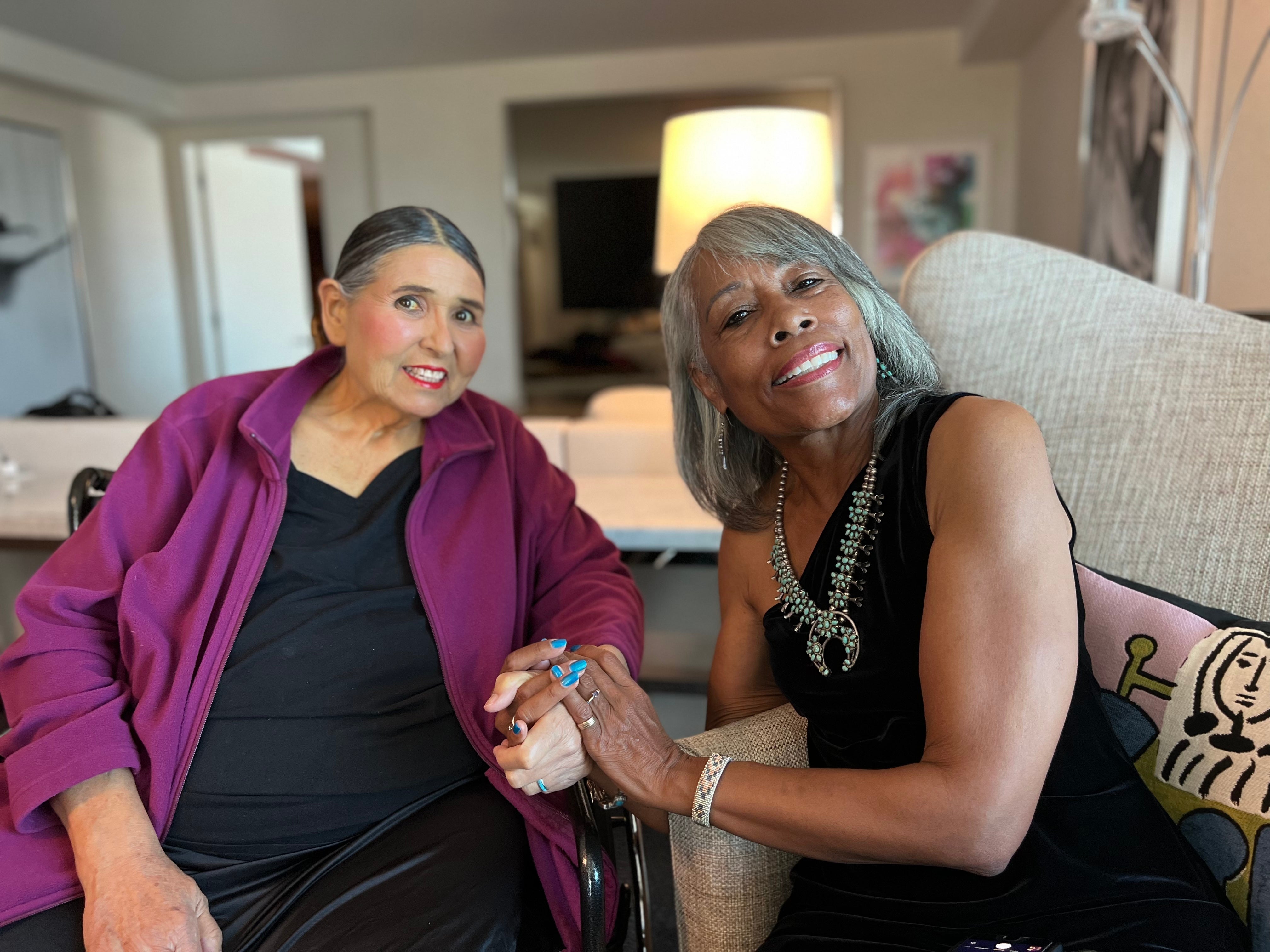
Sacheen Littlefeather and Phoebe Farris about an hour before arrival at the Academy Museum for the September 17 celebration. Photo by Calina Lawrence (Suquamish Nation).
Considering questions five and six about Sacheen’s Nanticoke friend and related topics, I can respond to them based on personal interactions. In 1990, Sacheen was a speaker and activity facilitator at a Native American wellness conference sponsored by St. Mary’s Hospital and Health Center’s Traditional American Indian Medical Program in Tucson, Arizona. Their series of conferences from 1984-1990 were coordinated by Comanche medicine man Edgar Monetatchi Jr., who worked for the Indian Health Service and was the first medicine man employed full-time by a Catholic hospital.
During a 1990 conference, a Nanticoke friend of Sacheen’s, originally from Delaware, became agitated, threatening, and out of control, frightening many of the conference participants. People were afraid to go near him or to assist Sacheen in trying to calm him. Since he was from a Delaware-based Nanticoke Tribe, a Tribal community relatively close to Washington, D.C., and the tribe of my mother’s childhood best friend, I felt compelled to help Sacheen, even though I had never met her. We were able to get him to a hospital where he was diagnosed with AIDS, and we were told that temporary psychotic episodes sometimes happened to people with AIDS. This was during the early years when people were terrified to be near patients with AIDS; we had to wear hazmat suits for our two hospital visits.
After I returned to the east coast, Sacheen kept me updated on his condition and her hospital visits with him until he died. During my two hospital visits, Sacheen never expressed fear of contracting AIDS and held her friend’s hand, comforting him. At the hospital, Sacheen did not identify herself as the person who gave the famous Brando/Oscar speech, but just a close friend trying to help a fellow friend who was suffering. Later on, I found out that Sacheen both worked and volunteered at Gift of Love AIDS Hospice in San Francisco, founded by Mother Teresa, and had met Mother Teresa during one of her visits. It was something Sacheen seldom talked about and certainly never bragged about to me.
Around this same time, another close friend of Sacheen’s was ill with terminal cancer. She cared for him at home during most of his illness, getting his groceries, cleaning his apartment, and communicating with his family. He was originally from Puerto Rico and wanted Sacheen to meet his family and friends living there while he was still strong enough to travel. Sacheen loved being in Puerto Rico, often mentioning how people in the same family had a range of skin colors, and everywhere she went she saw people of all shades socializing together, having fun, and seeming to be somewhat oblivious to race and color. She talked about blending in with the people of Puerto Rico and how it was one of her most memorable vacations. Shortly before her friend passed she took me to meet him. These are just a few examples of how Sacheen didn’t make a big deal about people’s race or Tribal identity, having very close friendships across race/color/Tribal/socioeconomic backgrounds.
As to Sacheen’s advocacy for Kateri Tekakwitha’s sainthood, I would say that she was deeply spiritual, respecting traditional Indigenous ceremonies while also being a devout Catholic, seeing no conflict in accepting various spiritual or religious beliefs. Sacheen participated in many of the Kateri Tekakwitha conferences that eventually led to her canonization as the first Native American Roman Catholic saint. Sacheen was especially devoted to Father Ken, sending donations to his New Melleray Monastery that funded Native American children’s programs, special masses for extremely sick people, and travel expenses for Native Americans to attend annual Kateri Tekakwitha canonization advocacy conferences. The monastery follows a strict vow of silence, and Sacheen was on the short list of people Father Ken would call during the times he was allotted to speak.
Charles Koshiway, a.k.a. “Mr. Charles,” was Sacheen’s soulmate. Watching them together at home and at powwows, one could see and feel their mutual love and respect. Their love story is typical of many couples: a beautiful woman has two admirers, who would she select to be “the one?” Should she choose the somewhat younger, very handsome, flirtatious Indian from Oklahoma, or the equally handsome but older, more mature Indian, also from Oklahoma? Sacheen picked Mr. Charles, who was not intimidated or threatened by her fame, and didn’t mind staying in the background when the limelight did shine on his life partner of 32 years.
I do not know what is going to happen with Sacheen Littlefeather’s unfinished memoir. Over the phone, she read to me excerpts that were to be included in the Introduction and first few chapters that explicitly detailed some of her early childhood experiences of abuse, parental neglect, and exposure to racial slurs. The narrative and first-person dialogue were as riveting as watching a thriller. Sacheen’s expressive voice was overwhelming with scenes one could imagine visually.
Sacheen did manage to verbally respond to my last question. A few days after one of her hospitalizations, just weeks before her anticipated ceremony, she called me excitedly to talk about getting a phone call from director Spike Lee. She didn’t know who gave him her private number, but was glad they did. She said she was almost as excited about Spike Lee’s phone call as her own upcoming event. Their main topic was about “white domination,” in her exact words. When I mentioned that one of Spike Lee’s studios and administrative offices was in a brownstone around the corner from my daughter’s house in Brooklyn, New York, and that we recently saw him and his wife at a local outdoor restaurant, she became more excited, asking me if he knew my daughter and if he knew she was Indian. We both started laughing at her excitement over this unexpected phone call and how it cheered her up after her recent hospitalization.
After the laughter died down, Sacheen became serious when discussing how she was mentally and physically preparing for September 17. As she described it, her routines for physical health included taking herbs and natural supplements in addition to prescribed medications. She also talked about wearing something beautiful and comfortable while on stage, such as her new ribbon skirt. To prepare herself emotionally and mentally, Sacheen said she follows one of Father Ken’s suggestions. This involves drawing a line on a piece of paper and writing the words ‘us,’ ‘we,’ and ‘our’ on one side, and ‘me,’ ‘myself,’ and ‘I’ on the other side, and reflecting on which side of the line she wanted to base her life on. Father Ken frequently told Sacheen and others that the three most important words are gratitude, forgiveness, and love.
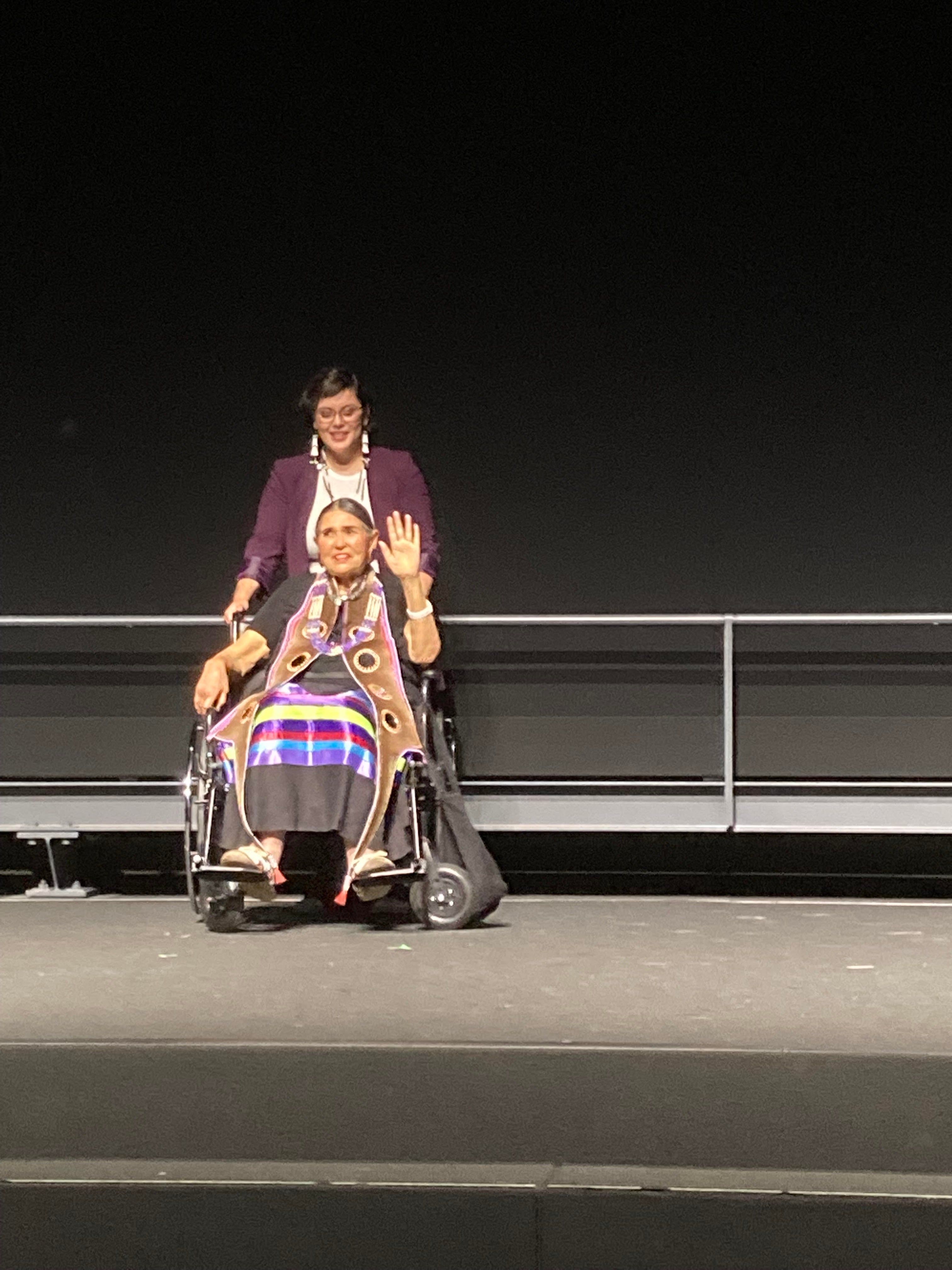
A last wave good bye, with Calina Lawrence (Suquamish Nation), Sacheen’s niece, caretaker, and singer and composer.
Thank you, Sacheen Littlefeather! To so many people of all backgrounds you have shown gratitude for any small or large gifts they gave you, forgiven transgressions small and large of your friends and even of those who were unkind to you, and expressed your love in countless ways that will always be remembered by those whose lives you touched.
Aho.
Sacheen Littlefeather passed on October 2, 2022. Her words will be remembered for generations to come: “When I am gone, always be reminded that whenever you stand up for your truth, you will be keeping my voice and the voices of our Nations and our people alive. I remain Sacheen Littlefeather. Thank you."
--Phoebe Mills Farris, Ph.D. (Powhatan-Pamunkey) is a Purdue University Professor Emerita, photographer, and freelance art critic.
All photos by Phoebe Farris.
